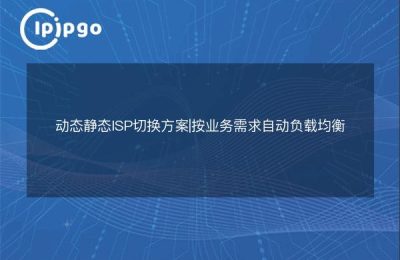
Why does the network have to be changed to a static IP to work
In network configuration, IP address is the basis for each device to communicate in the network.IP address can be categorized into two types: dynamic IP and static IP. Often times, users are asked to set their IP address to a static IP when using network services. why is this required? We will explore this question in depth below.
1. What are static and dynamic IPs?
Before we understand the need for static IPs, we first need to differentiate between static and dynamic IPs:
- Static IP:A static IP address is a fixed IP address where the device always uses the same IP address when connecting to the network. It is usually assigned manually by a network administrator and is used in scenarios where a stable connection is required.
- Dynamic IP:A dynamic IP address is a device that may get a different IP address each time it connects to the network. This type of IP address is usually assigned automatically by a DHCP (Dynamic Host Configuration Protocol) server and is suitable for most common users.
2. Advantages of static IP
Static IP is superior in some cases, mainly in the following ways:
- Stability:Static IP addresses don't change, so you can be sure of connection stability when doing remote access, server hosting, and more.
- Simplified access:When using a static IP, users can access the device directly through the IP address without worrying about access problems caused by IP address changes.
- Easy to manage:In network management, static IPs allow for easy device identification and management, especially in large networks where static IPs reduce confusion.
3. Limitations of dynamic IP
While dynamic IP is adequate in most cases, its limitations are apparent in some specific applications:
- Instability:Dynamic IPs may change each time you connect, which can be inconvenient for applications that require a stable connection.
- Access Restrictions:Some services (e.g., online gaming, remote monitoring, etc.) may require users to use a static IP to ensure continuous access.
4. When to change to a static IP
Below are some common scenarios where users may need to change their IP address to a static IP:
- Server hosting:If you are hosting a server (e.g. web server, FTP server, etc.) at your home or office, using a static IP ensures that it is always accessible to other users.
- Remote Access:If you need to access a device remotely on a regular basis, a static IP simplifies the connection process and avoids having to look up a new IP address frequently.
- Online Game:Some online games may require a static IP to ensure stability and connectivity.
5. How to set up a static IP
If you decide to change your IP address to a static IP, here are the general setup steps (using Windows as an example):
- Open the Control Panel and select Network and Internet.
- Click "Network and Sharing Center" and then select "Change adapter settings".
- Right-click on the network connection you are currently using and select "Properties".
- In "This connection uses the following items", select "Internet Protocol version 4 (TCP/IPv4)", and then click "Properties".
- Select "Use the following IP address" and enter the static IP address, subnet mask and default gateway you wish to set. Click "OK" to save the settings.
summarize
In some network environments, the change to static IPs is made to provide greater stability and accessibility. While dynamic IPs are sufficient in most cases, static IPs are definitely a better choice in scenarios that require constant connectivity, remote access, or server hosting. Knowing this can help you make more informed decisions in your network configuration.








